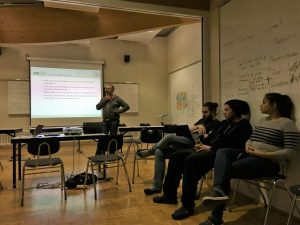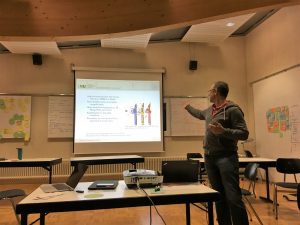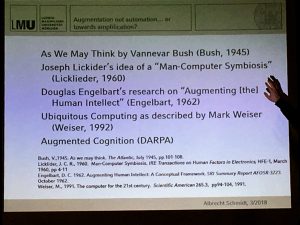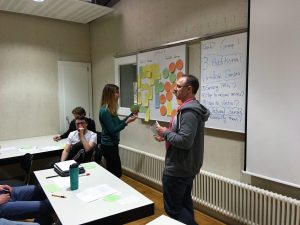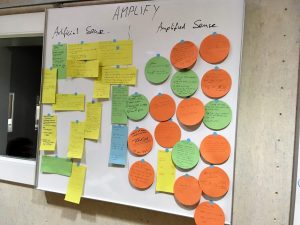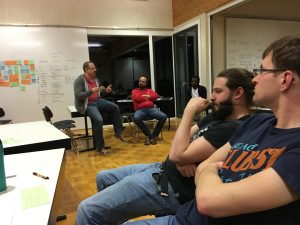 Albrecht Schmidt , Passant El.Agroudy & Albrecht Schmidt , Passant El.Agroudy &Francisco Kiss |
 not available not available |
 Thu, 15.03.2018 Thu, 15.03.2018 |
|---|
This session was divided into two parts: 1) introduction to “how can we amplify the human mind?”, and 2) brainstorming activities to create and extend new senses.
How can we amplify the human mind?
A question directly related to the research within the European Amplify project. In this interactive session (led by Prof. Schmidt), we discussed different aspects that are involved when answering this question:
- How can we improve our own perception and cognition as well as extend our memory capabilities? Can we (do we need to) formulate new types of tasks for such amplified minds?
- And probably most important: Can we quantify this amplification and measure it.
An easy way to think about this is to imagine amplified versions of one’s senses.For example, what are the implications of augmenting our eyes, e.g. being able to perceive at higher framerates and at a broader spectral band?
Activity 1: 6-3-5 Brainwriting: Create new senses
In this activity, we used the (6-3-5 brainwriting) technique to collect ideas about “new artificial senses”. We split into groups of 5 and came up with three “artificial” senses including suggestions on: 1) suitable sensing technologies, 2) how to activate and control them?, and 3) which standard senses will be utilized to create them?.
Activity 2: Create an artificial sense and extend a natural one
In this exercise, each participant was asked to use the data from the previous activity and create 1) a new artificial sense and 2) extend an existing one (vision, audition, gustation, olfaction, and somatosensation). For each sense, the participant explained the sense, the technology we could use and why we would need it.
Samples for new artificial senses
- sense to detect “fake news”
- being able to see the weather forecast when needed
- sense of snow geometry
- sense of pollution
Samples for amplified natural senses
- augmented curvature vision
- visual zooming on demand
- being able to taste non-existent food (remote tasting)
- visually recognizing the size of a remote option
- identifying food ingredients by smelling them
- remote hearing
